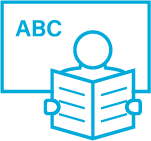


This study found that Namibian teachers’ knowledge of language and reading components was poor. Teacher training should ensure that teachers are trained adequately in how to teach reading in languages with both transparent and opaque orthographies.
Author: Pamela J. February
Source: February, P. J. (2018). Teaching and learning to read in Afrikaans: Teacher competence and computer-assisted support. Jyväskylä: University of Jyväskylä, 2018, 138 (JYU Dissertations 5). http://urn.fi/URN:ISBN:978-951-39-7515-9
This study explored the knowledge, perceptions, and classroom practices of teachers in Namibia in relation to teaching reading and how learners’ reading acquisition is supported. Data was gathered by a self-completion survey with 132 grade 1 teachers. Teachers’ knowledge of language and reading components was poor. Teacher training should ensure that teachers are trained adequately in how to teach reading in languages with both transparent and opaque orthographies.
How to teach reading in local languages?
Factors affecting good learning results

The study
The aim of this study was to examine Namibian teachers’ knowledge, perceptions, and classroom practices related to teaching reading, and how they support learners’ reading acquisition.
Research question:
Participants and procedure A self-completion survey of 132 grade 1 teachers in Namibia was conducted.

Findings

Implications
Teaching techniques